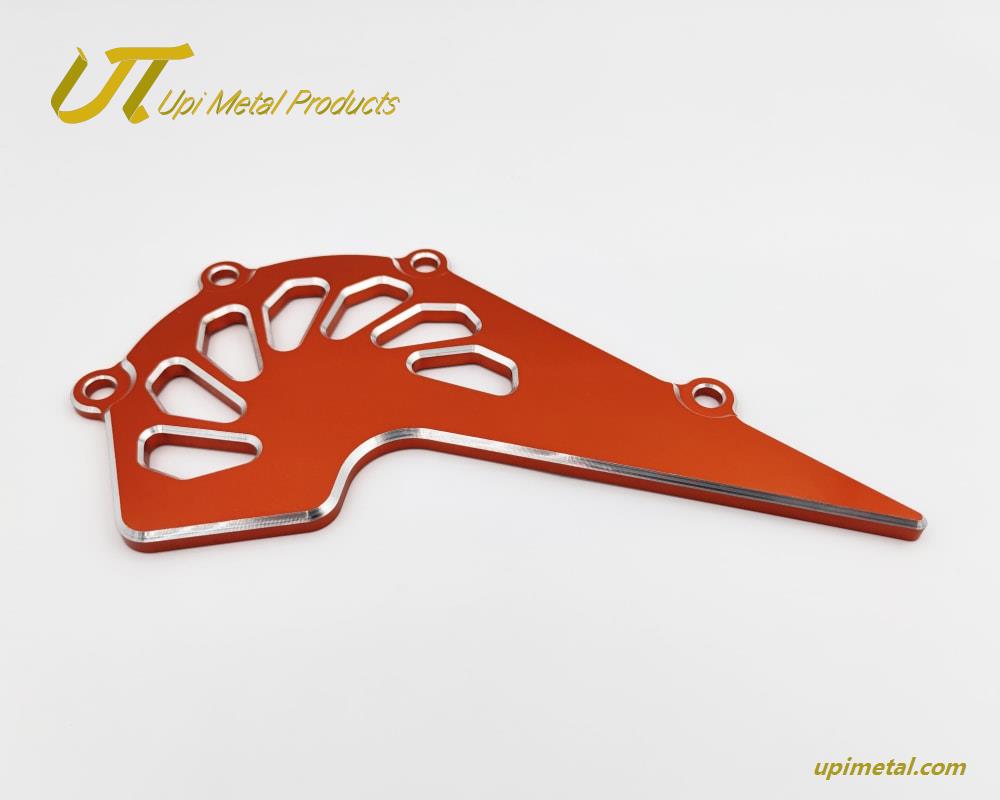Optimal Manufacturing Processes for a Customized Chainring Guard Decorative Cover
Title: Optimal Manufacturing Processes for a Customized Chainring Guard

In this blog post, we will explore the manufacturing process selection for a personalized accessory—an aesthetically demanding chainring guard decorative cover for motorcycles. This cover features a flat shape with regularly arranged irregular-shaped holes. After anodized coloring, the edges of the holes and the outer contour require CNC chamfering to create a high-gloss surface, enhancing the visual appeal of the decorative cover. As a customized motorcycle modification component, it serves both as chain protection and a means of personalizing the motorcycle's appearance. We will discuss different manufacturing processes based on production volumes and desired appearance qualities. Additionally, we will provide an overview of the mentioned production techniques for a better understanding. Let's dive in!
Small-Batch Production Process:
For small-batch production, the chainring guard decorative cover can be manufactured using CNC machining and subsequent processes. The initial step involves CNC machining the cover from a solid aluminum block, ensuring precise hole placement and shape. After CNC machining, the cover undergoes anodized coloring to achieve the desired appearance. Subsequently, CNC chamfering with a high-speed diamond tool is employed to create a glossy chamfered surface, enhancing the decorative cover's visual effect.
Lower Appearance Quality Process:
If the appearance quality requirements can be slightly relaxed, an alternative manufacturing process can be used. The process involves laser cutting the cover shape from aluminum sheet metal. CNC machining is then utilized to create counterbore steps for screw holes, followed by deburring and polishing to remove any sharp edges. Next, the cover undergoes aluminum oxidation treatment and subsequent chamfering using CNC machining.
Mass Production Process:
Once the decorative cover gains market recognition and experiences increased demand, mass production can be achieved by introducing stamping dies. The process begins with stamping the blank using the dies, followed by CNC machining to remove any burrs and achieve a smooth cross-section. Counterbore steps for screw holes are machined, and then the cover undergoes anodized coloring. Finally, CNC chamfering is performed to achieve the desired high-gloss appearance. This process optimizes production volume and reduces per-piece costs.
Conclusion:
The optimal manufacturing processes for the customized chainring guard decorative cover depend on production volumes and desired appearance qualities. For small-batch production, CNC machining and subsequent processes, such as anodized coloring and CNC chamfering, offer precise control and high-quality finishes. In cases where appearance quality requirements can be relaxed, laser cutting, CNC machining, deburring, polishing, aluminum oxidation treatment, and chamfering provide a cost-effective solution. Mass production can be achieved through the integration of stamping dies, enabling efficient production with reduced per-piece costs. Understanding the diverse manufacturing techniques available allows for informed decisions based on production requirements and desired outcomes.
We hope this blog post provides valuable insights into the manufacturing process selection for personalized motorcycle accessories and sheds light on the application of CNC machining, stamping, anodized coloring, and other production techniques.

